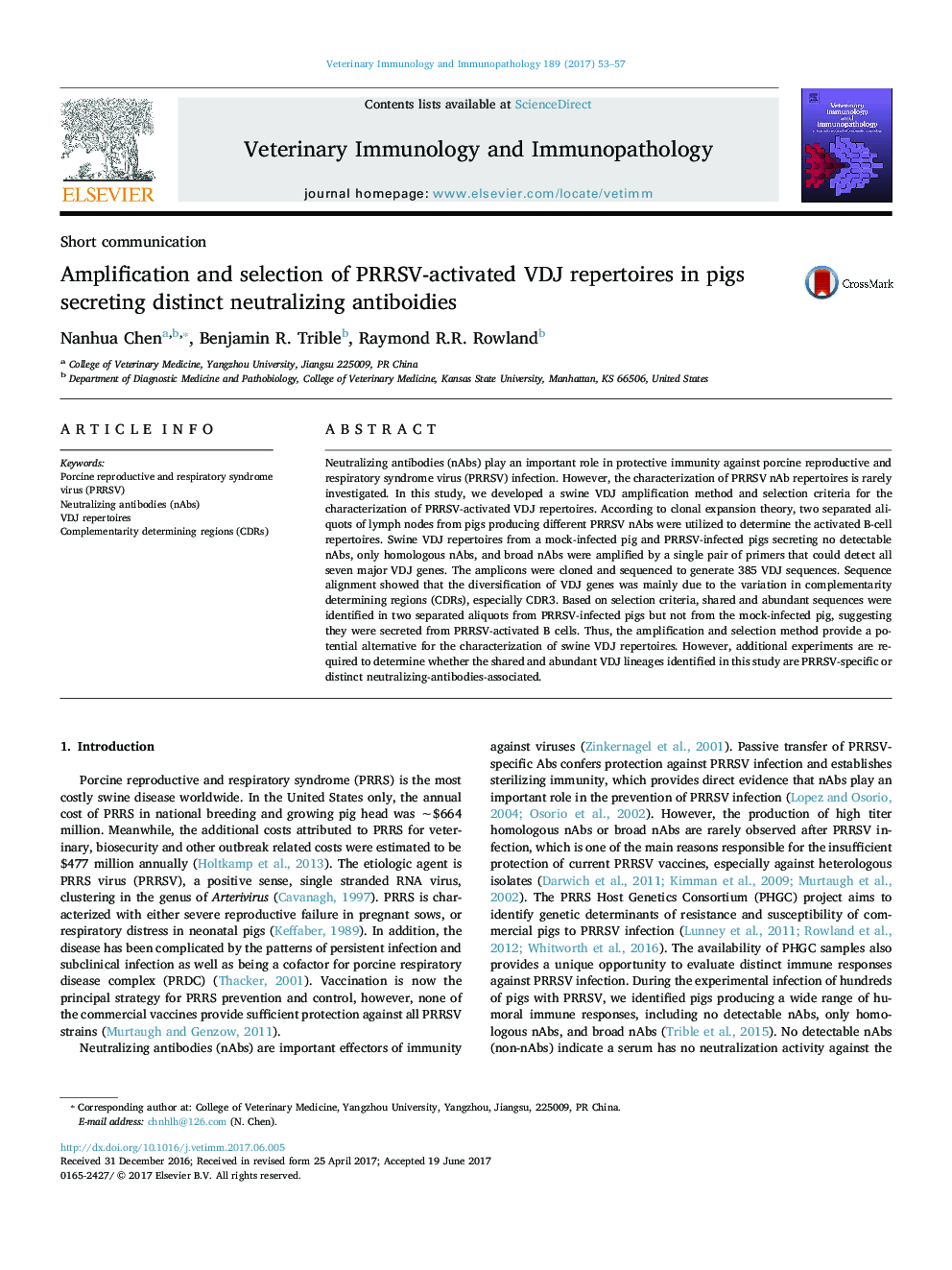| Article ID | Journal | Published Year | Pages | File Type |
|---|---|---|---|---|
| 5544702 | Veterinary Immunology and Immunopathology | 2017 | 5 Pages |
Abstract
Neutralizing antibodies (nAbs) play an important role in protective immunity against porcine reproductive and respiratory syndrome virus (PRRSV) infection. However, the characterization of PRRSV nAb repertoires is rarely investigated. In this study, we developed a swine VDJ amplification method and selection criteria for the characterization of PRRSV-activated VDJ repertoires. According to clonal expansion theory, two separated aliquots of lymph nodes from pigs producing different PRRSV nAbs were utilized to determine the activated B-cell repertoires. Swine VDJ repertoires from a mock-infected pig and PRRSV-infected pigs secreting no detectable nAbs, only homologous nAbs, and broad nAbs were amplified by a single pair of primers that could detect all seven major VDJ genes. The amplicons were cloned and sequenced to generate 385 VDJ sequences. Sequence alignment showed that the diversification of VDJ genes was mainly due to the variation in complementarity determining regions (CDRs), especially CDR3. Based on selection criteria, shared and abundant sequences were identified in two separated aliquots from PRRSV-infected pigs but not from the mock-infected pig, suggesting they were secreted from PRRSV-activated B cells. Thus, the amplification and selection method provide a potential alternative for the characterization of swine VDJ repertoires. However, additional experiments are required to determine whether the shared and abundant VDJ lineages identified in this study are PRRSV-specific or distinct neutralizing-antibodies-associated.
Related Topics
Life Sciences
Agricultural and Biological Sciences
Animal Science and Zoology
Authors
Nanhua Chen, Benjamin R. Trible, Raymond R.R. Rowland,
